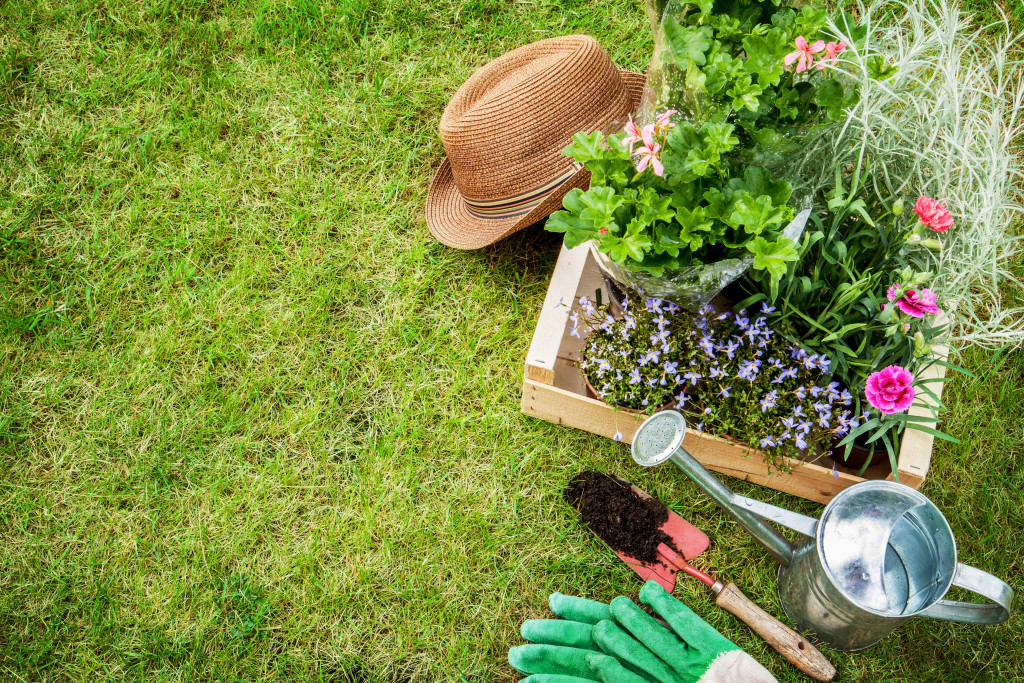There are plenty of benefits to growing your own food. For one, it means that the fruits and vegetables you consume aren’t exposed to harsh pesticides and may potentially be more nutritional than average. To add to the physical benefits, gardening can also boost your mental health since it acts as a form of stress relief.
If anything, gardening is a highly appealing hobby to pick up. It doesn’t have to be so intimidating. Still, most individuals get discouraged and overwhelmed by the various elements you need to consider. Here are some basic tips to keep in mind so you can give gardening a try.
Consider the Location
Do you live somewhere colder? You can literally grow plants anywhere, during any season. Some people even get greenhouses for cold weather, even during winter. Anything is possible. However, you can start small and choose a comfortable corner in your backyard or place a little pot on your windowsill. Doing so can already teach you what you need to do and know.
Learn About Seeds vs. Starter Plants
Pick up a pack of seeds to keep things as simple as possible. First of all, it’s the more affordable option. More importantly, seed packets often come with step-by-step instructions you can follow. Usually, you can get started by digging shallow rows of holes in the dirt, placing down the seeds, covering them up gently, and watering the area.
On the other hand, starter plants are considered the better choice when you start gardening and don’t have much of the plant’s growing season left. Be careful not to damage the plant’s roots when you transplant it into a bigger hole, and make sure you pack the soil gently to keep the plant in place.
Know the Right Watering Methods
It’s easy to overwater your plant. Make sure you double-check each plant’s ideal watering frequency and quantity. Generally speaking, it’s better to water them once or twice a week instead of watering them bit by bit daily.
Remember that other factors determine how often you should water them. For example, living in hotter climates dries the soil faster, requiring you to water more often. When you’re unsure, though, you can always check to see if there’s enough water by sticking your finger two to three inches deep into the soil. Only add more water when there is no sign of moisture.
Protect the Plants
Without the right conditions, plants may be hurt by common garden pests or develop their own diseases. Keep them healthy with a good amount of sunlight daily and enough water and nutrients. For added protection against animals, you can build creative fences around the area.
By the way, don’t worry if you notice weeds growing nearby. That’s completely normal, and as long as they don’t completely take over, your plants will be okay. It’s still best to get rid of them as best you can, though. You have two options. The first is to manually pull them out when the ground is wetter. For dry soil, you can use a garden hoe.
Provide the Right Soil and Essential Nutrients

Knowing whether your soil is fertile enough is a learnable skill that most beginners can pick up after gaining more experience. For now, you can buy different testing kits that let you check whether your plants are getting the nutrients they need.
Get Creative with Vertical Space
In urban areas, it’s quite popular to maximize any vertical space available. Outdoors, you can make full use of your balcony and set your plants inside large storage containers or raised beds. If you’re an indoor gardener, consider getting hanging baskets or making your own DIY wall rack using wood trellises or steel mesh. Following these techniques, you can grow various vegetables like eggplants, tomatoes, peppers, melons, cucumbers, beans, squash, and peas.
Never Stop Learning
Once you’ve started gardening, it can be quite fulfilling to keep going and explore more plant options. Do your own research or join community gardening groups to gain more inspiration for future seasons. You can also share tips, tricks, and your own experiences with each other. When you feel like taking the next step, learn how to set up the different composting methods. This can help you naturally enrich the soil and grow healthier plants.
Gardening is for everyone, whether you intend to start living a healthier lifestyle, cut down on pollution, or simply cultivating your green thumb. Regardless of your reason, it’s best to get started and learn as you go. This way, you can sow and reap all the rewards it comes with.







